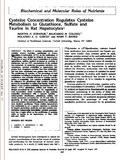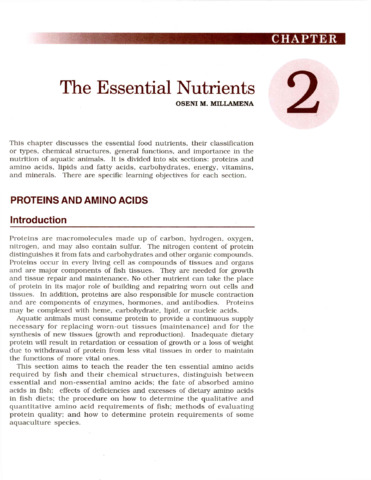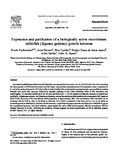Cysteine concentration regulates cysteine metabolism to glutathione, sulfate and taurine in rat hepatocytes
- Global styles
- MLA
- Vancouver
- Elsevier - Harvard
- APA
- Help
Share
抄録
The effect of cysteine concentration and cysteine source [cysteine, methionine or 2-oxo-thiazolidine-4-carboxylate (OTC)] on the metabolism of [35S]cysteine was studied in isolated rat hepatocytes. Production of each of the major metabolites of cysteine (glutathione, sulfate, taurine) increased as cysteine or methionine, but not OTC, concentration in the medium was increased. At equimolar exogenous substrate concentrations, cysteine availability to hepatocytes was greater from exogenous cysteine than from methionine, and that from methionine was greater than from OTC. The partitioning of cysteine, or the percentage of total metabolism resulting in production of each of the major metabolites, was markedly affected by cysteine concentration or availability. Low cysteine availability favored its utilization for glutathione; high cysteine availability favored its catabolism to sulfate and taurine. Under conditions of low cysteine availability (incubations with 0.2 mmol/L OTC), glutathione, sulfate and taurine production accounted for 90, 10 and 1%, respectively, of total metabolism. Under conditions of high cysteine availability (incubations with 1 mmol/L cysteine + bathocuproine disulfonate), glutathione, sulfate and taurine production accounted for 19, 47 and 34%, respectively, of total metabolism. Cysteine supplied as such and cysteine formed intracellularly from methionine were similarly partitioned. These studies demonstrate that methionine is not a superior substrate to cysteine for hepatic glutathione synthesis and that cysteine concentration (presumably intracellular cysteine concentration) has a major effect on the partitioning of cysteine sulfur to taurine in rat hepatocytes.
Suggested Citation
Stipanuk, M. H., Coloso, R. M., Garcia, R. A. G., & Banks, M. F. (1992). Cysteine concentration regulates cysteine metabolism to glutathione, sulfate and taurine in rat hepatocytes. Journal of Nutrition , 112(3), 420-427. http://hdl.handle.net/10862/1397
Type
ArticleISSN
0022-3166Collections
- Journal Articles [1247]
Related items
Showing items related by title, author, creator and subject.
-
The essential nutrients: Proteins and amino acids
Millamena, Oseni M. (Aquaculture Department, Southeast Asian Fisheries Development Center, 2002)This section aims to teach the reader the ten essential amino acids required by fish and their chemical structures, distinguish between essential and non-essential amino acids; the fate of absorbed amino acids in fish; ... -
Metabolism of cysteine to taurine by rat hepatocytes.
Stipanuk, Martha H.; Bagley, P.J.; Banks, Mark F. (Plenum Press, 1992)During the past two decades, many investigators have assumed that the major locus of regulation of cysteine catabolism is the partitioning of cysteinesulfinate between its decarboxylation and transamination pathways. Hepatic ... -
Expression and purification of a biologically active recombinant rabbitfish (Siganus guttatus) growth hormone
Funkenstein, Bruria; Dyman, Dyman; Lapidot, Ziva; de Jesus-Ayson, Evelyn Grace; Gertler, Arieh; Ayson, Felix G. (Elsevier, 2005)Recombinant rabbitfish growth hormone (rfGH) protein was expressed in Escherichia coli, BL21(DE3) cells. The cDNA encoding the mature protein of rfGH was first cloned in pGEM-Teasy vector and then transferred to pET-3d ...99 Total citations2 Recent citations0.43 Field Citation Ration/a Relative Citation Ratio




